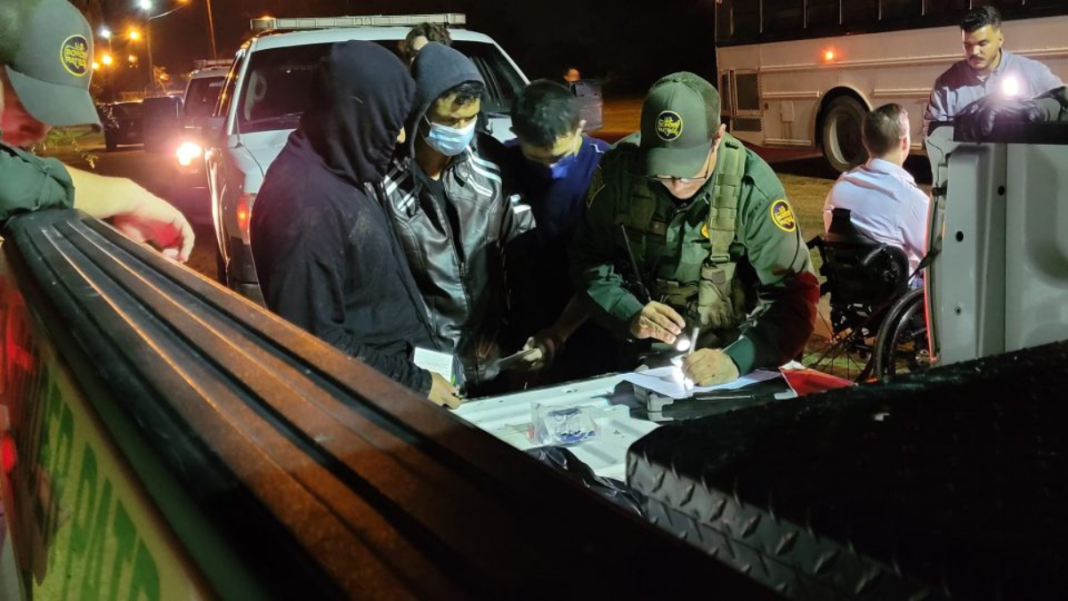The U.S. Border Patrol has quietly expanded its reach far beyond the nation’s borders, using Border Patrol surveillance to monitor millions of American drivers through a secret program designed to detect “suspicious” travel patterns. According to an investigation by The Associated Press, the agency uses license plate readers and advanced algorithms to track everyday movements, sometimes leading to stops, searches, and arrests — even when drivers have done nothing illegal.
The program, originally created to combat cross-border crime, now collects massive amounts of data across the country through its Border Patrol surveillance network. Cameras scan vehicle license plates, and an algorithm flags vehicles based on where they came from, where they are going, and the routes they take. Local law enforcement is often notified, and drivers may be pulled over for minor infractions such as speeding, a dangling air freshener, or window tint violations.
How Border Patrol Surveillance Tracks Drivers
Initially, Border Patrol focused on policing the nation’s borders. Over the last decade, however, its Border Patrol surveillance network has expanded into a system that reaches deep into U.S. cities and towns. Agents collect license plate information using a network of cameras hidden in traffic equipment like barrels and cones. Some cameras even capture a driver’s face.
The Border Patrol sets its own criteria for what counts as “suspicious” behavior. Agents can flag drivers for taking back roads, using a rental car, or making short trips to border regions. The Border Patrol surveillance system now stretches from southern border states like Texas, Arizona, and California to areas near the U.S.-Canada border, and even into major cities such as Chicago, Detroit, Los Angeles, and Houston. In Phoenix, authorities have installed at least four cameras, including one more than 120 miles from the Mexican border.
U.S. Customs and Border Protection (CBP), the agency that oversees Border Patrol, defends the program, saying agents use license plate readers to identify threats and disrupt criminal networks while following federal law and constitutional protections. “For national security reasons, we do not detail the specific operational applications,” CBP said. The agency also emphasized that while its personnel mainly operate within 100 miles of the border, the law allows them to operate anywhere in the United States.
Real-Life Encounters with Border Patrol Surveillance
Lorenzo Gutierrez Lugo, a delivery driver for a small South Carolina-based trucking company, recently experienced the program firsthand. While transporting packages to Mexico, local police stopped him near Kingsville, Texas — about 100 miles from the border. The officer cited speeding as the reason for the stop, but Border Patrol had flagged his vehicle through Border Patrol surveillance as potentially carrying contraband.
Agents searched his truck but found nothing illegal. They briefly arrested Gutierrez Lugo on suspicion of money laundering because he carried cash — payments from legitimate customers. Prosecutors eventually dropped the charges, but his employer reported spending $20,000 in legal fees to recover the truck and clear his employee’s name.
Migrants targeted with false social media posts showing Trump claiming the border is open
Similarly, in 2022, Border Patrol agents tracked Alek Schott of Houston on his overnight trip to Carrizo Springs, Texas, and local deputies pulled him over. Sheriff’s deputies held him for more than an hour, conducted a thorough search of his vehicle, and found nothing. Schott later discovered that Border Patrol agents had been monitoring his travel patterns and sharing information with local law enforcement through private group chats.
These stops, known internally as “whisper,” “intel,” or “wall” stops, allow Border Patrol to conceal its role. Officers pull drivers over citing minor traffic violations while using tips from federal Border Patrol surveillance data. This approach enables the agency to track ordinary Americans’ movements without alerting them that they are under investigation.
The Technology Behind Surveillance
The license plate reader program is part of a larger intelligence network that CBP has quietly developed over the years. Known as the Conveyance Monitoring and Predictive Recognition System (CMPRS), it collects images of license plates and matches them against “hot lists” to detect unusual travel behavior. CBP has also partnered with local law enforcement, private companies, and federal agencies like the DEA to broaden the reach of Border Patrol surveillance.
Local police departments often receive federal grants, such as Operation Stonegarden funds, to purchase automated license plate readers and pay overtime for officers to assist Border Patrol. In some counties, deputies operate plate readers directly connected to CBP’s system. The agency can access data from private companies such as Flock Safety, Rekor, and Vigilant Solutions, which operate thousands of cameras across the country.
DHS issues subpoena to Meta for Instagram accounts posting images of Border Patrol agent
By analyzing patterns of vehicle movements, Border Patrol agents can identify unusual travel, such as avoiding checkpoints or frequently visiting border regions. The technology allows them to compile “patterns of life,” which are then used to predict who may be involved in illegal activity. Although no contraband is often found, the program significantly expands government surveillance of everyday American travel.
This investigation highlights the widespread, largely hidden Border Patrol surveillance occurring on U.S. roads and raises questions about privacy and constitutional protections. While the agency claims it acts within the law, these programs show the growing use of technology to monitor ordinary citizens’ movements across the country.

